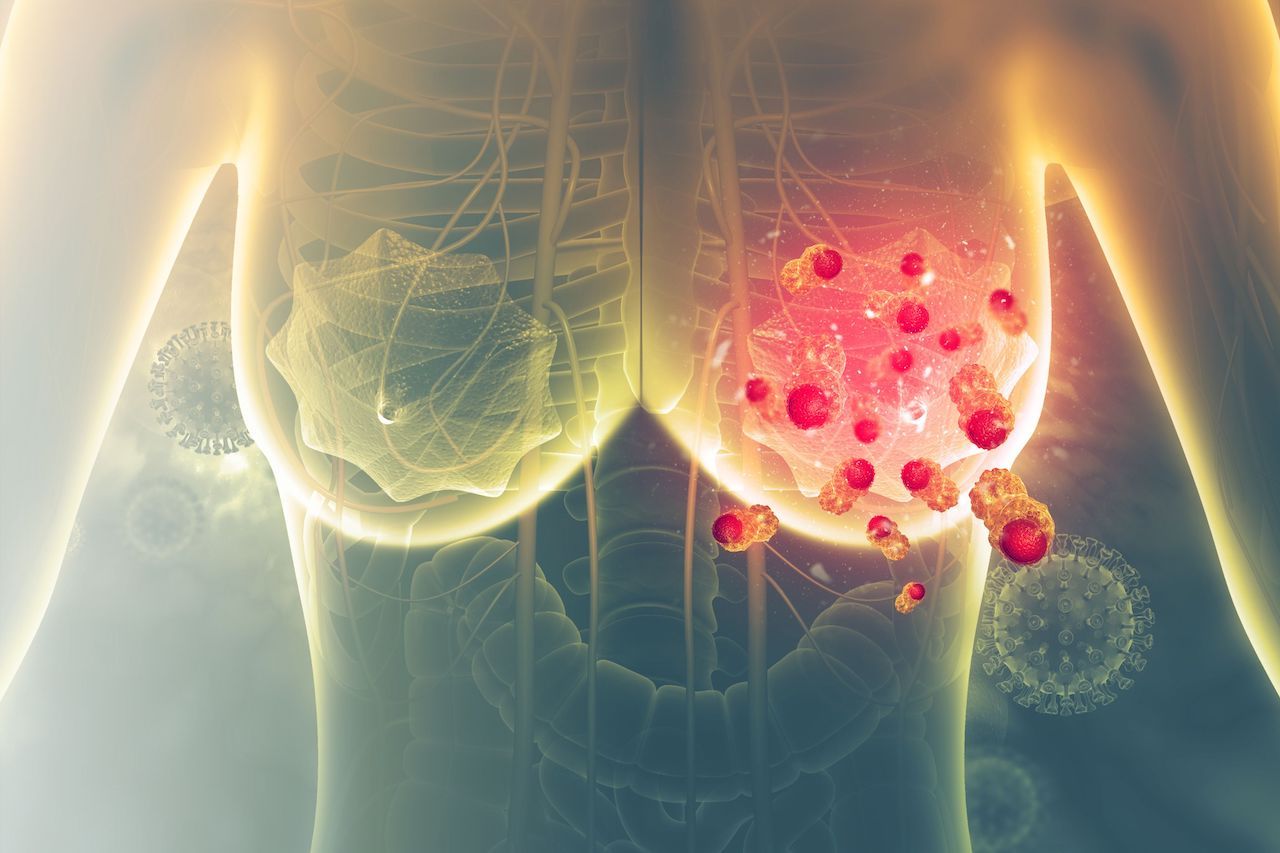Article
Study Results Show Pembrolizumab Plus Chemotherapy May Be Effective in Patients With TNBC
Author(s):
The standard therapy for triple-negative breast cancer (TNBC) remains chemotherapy, despite a dismal prognosis due to lack of estrogen and progesterone hormone receptors, as well as HER2 receptors. Targeted therapies for this difficult-to-treat, often aggressive, subtype of breast cancer remain elusive.
The standard therapy for triple-negative breast cancer (TNBC) remains chemotherapy, despite a dismal prognosis due to lack of estrogen and progesterone home receptors, as well as HER2 receptors. Targeted therapies for this difficult-to-to treat, often aggressive, subtype of breast cancer remain elusive.
However, interim results from the phase 3 KEYNOTE-522 study point to progress in this area. Evidence to this effect was recently published in the New England Journal of Medicine, showing a benefit to neoadjuvant treatment with pembrolizumab plus chemotherapy in patients with untreated stage 2/3 TNBC. The primary end points were pathological complete response (PCR; stage ypT0/Tis ypN0) and event-free survival.
“We saw a nearly 14% increase in the number of women with no cancer following chemotherapy, which is a massive step forward,” noted Peter Schmid, FRCP, MD, PhD, study lead, Queen Mary University of London and Barts Health NHS Trust. “It's long been established that women with no residual cancer after preoperative treatment stand a much better chance of remaining cancer free; so being able to substantially improve these numbers is truly exciting. This would be the first targeted treatment open to all women with early triple-negative breast cancer."
Patients qualified for the study if they were at least 18 years old with a newly confirmed case of nontreated, nonmetastatic TNBC; good organ function; and an Eastern Cooperative Oncology Group performance score of 0 or 1. They were randomized 2:1 in the double-blind trial to neoadjuvant therapy of 4 cycles of 200-mg pembrolizumab every 3 weeks plus paclitaxel and carboplatin (n = 784) or placebo plus paclitaxel and carboplatin (n = 390).
The next step was 4 cycles of pembrolizumab or placebo, plus doxorubicin-cyclophosphamide or epirubicin-cyclophosphamide. Surgery followed, after which there were up to 9 cycles of adjuvant pembrolizumab or placebo, with radiation treatment if needed. Follow-up took place quarterly during the 2 years after randomization, bi-annually for years 3 through 5, and annually during years 6 through 8.
There were 2 interim analyses. At the initial analysis of the first 602 randomized study participants, there was a PCR of 64.8% (95% CI, 59.9%-69.5%) in the pembrolizumab-plus-chemotherapy group compared with 51.2% (95% CI, 44.1%-58.3%; P = .001) in the placebo group. The second interim analysis took place after a median 15.5 months (range, 2.7-25.0), and those results showed disease progression in just 7.4% versus 11.8% (HR, 0.63; 95% CI, 0.43-0.93), respectively.
Treatment in the pembrolizumab-plus-chemotherapy group was a median 51.1 weeks (range, 0.1-88.4) and in the placebo group, 54.1 weeks (range, 0.1-79.3). The most common grade 3 adverse effects were febrile neutropenia, anemia, and pyrexia, and these usually occurred in the neoadjuvant phase of the trial. Overall, 3 patients died from the treatment group, and 1 patient died from the placebo cohort.
The study authors noted how their findings echo those of the phase 1b KEYNOTE-173 trial, in which the PCR was 60% (90% CI, 30%-85%), and the phase 2 I-SPY2 trial, both which investigated neoadjuvant pembrolizumab plus chemotherapy among patients with breast cancer.
“The addition of pembrolizumab to platinum-containing neoadjuvant chemotherapy resulted in a significant increase in the percentage of patients who had a pathological complete response. The benefit with respect to pathological complete response was observed across most prognostic risk categories, including the category of patients with low PD-L1 expression,” they concluded.
Additional trials are needed to confirm the optimal duration of pembrolizumab therapy as both a neoadjuvant and adjuvant treatment.
Reference
Schmid P, Cortes J, Pusztai L, et al; KEYNOTE-522 Investigators. Pembrolizumab for early triple-negative breast cancer. N Engl J Med. 2020;382(9):810-821. doi: 10.1056/NEJMoa1910549.





